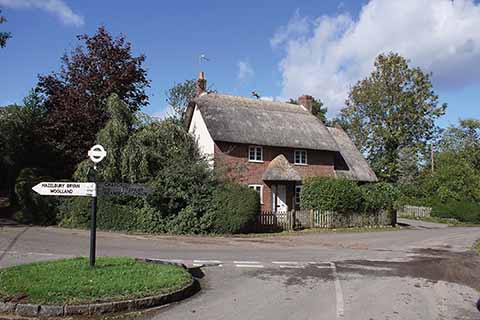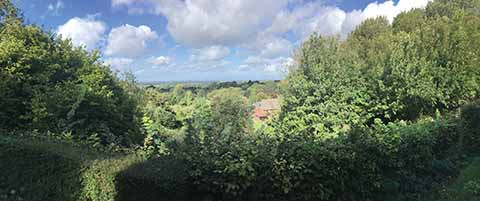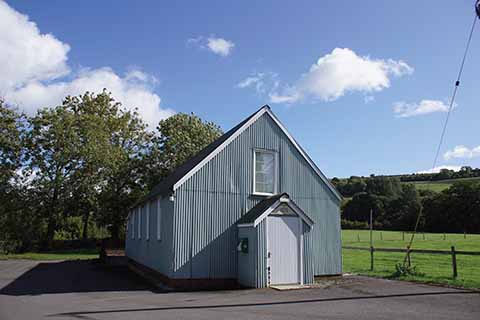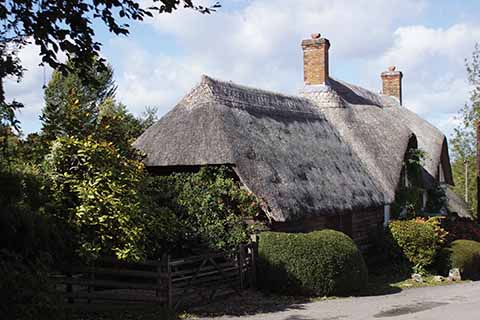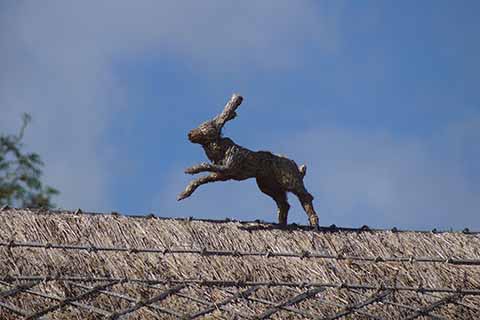Ibberton
Joël Lacey visits a charming village perched on the south-eastern edge of the Blackmore Vale
Published in January ’19
Ibberton, named for a long-departed man called Ēadbeorht, is about as quintessentially Dorset a village as one could hope to find. Sitting about 3¾ miles due south of Sturminster Newton, it is a small place that seems to cover a lot of ground. At the time of the last decennial census, the population was only just on three figures (101), but the parish covers an area of 1400 acres, giving it a population density of one person per fourteen acres.
Writing in their 1935 book, The Landscape of Dorset, G G Clark and W H Thompson describe the edge of the Blackmore Vale around Ibberton thus: ‘Dorset can show no fairer scene than this, removed as it is in both miles and years from the discordant notes of the twentieth century. Who can walk up the steep pathway to Ibberton Church and look out over the village roofs to the green meadows and the distant hills of Somerset without feeling a sense of timelessness, as if the years have ceased to register their numbers? No village in Dorset conveys the sense of remoteness, of endless repetition of the seasons, so fully as Ibberton, lodged so peacefully at the foot of the downs.’
Sir Frederick Treves, who is not renowned for doling out compliments, described it as ‘the beautiful old-fashioned village of Ibberton: a jumble of thatched cottages, gardens and orchards.’ He continued: ‘Some good soul, long ago, gave an acre of land here “for the ringing of the morning bell”. To understand the graciousness of that bequest, one must picture the hamlet in the dawn of a day in May, when the mist has barely melted from over the thatched roofs, when cottage windows are being thrown open to the sun, and then at such an hour, hear floating down from the silent hill the greeting of the morning bell.
‘Below the church, a spring breaks out of the rock and finds a way through the thicket of fern and bramble to the village. It bears the local name of Stachy’s Well. This does not serve to keep green the memory of some worthy well-digger of forgotten times, but commemorates the fact that the spring was dedicated to Saint Eustachius. The holy man’s name being inconveniently long, the villagers amiably changed it to Stachy.’
The village is very much a community with both a pub and a cricket team as well as being the location of the village hall (both for Ibberton and Belchalwell), which had a different original purpose when the church fell into disrepair in the late 1800s. As the village’s excellent Millennium Book reveals: ‘During this period (1897-1909) services were held in the temporary tin building which subsequently became the village hall. The church was reopened in 1909 after extensive restoration costing approximately £1500.’
The book talks about the church in more detail: ‘The 14th-century church is sited on a plateau on the lower slopes of Ibberton Hill from where it overlooks the village. Built between 1380 and 1400, it is one of only three in England to be dedicated to St. Eustace, the others being Hoo in Suffolk and Tavistock in Devon. There are some fragments of Elizabethan stained glass in some of the windows and the font is 15th-century. Originally there was a wooden gallery at the back of the church.’
There is more tile than thatch now in the village, and the 20th and 21st centuries saw a fair level of redevelopment in the former and modifications in the latter. It still feels like an archetypal North Dorset village, though, and all one would hope for it is that the gritters get through in winter, as it feels that a bit of ice on the hilly roads in and out of Ibberton could leave one stranded here. Mind you, that wouldn’t be such a trial.
